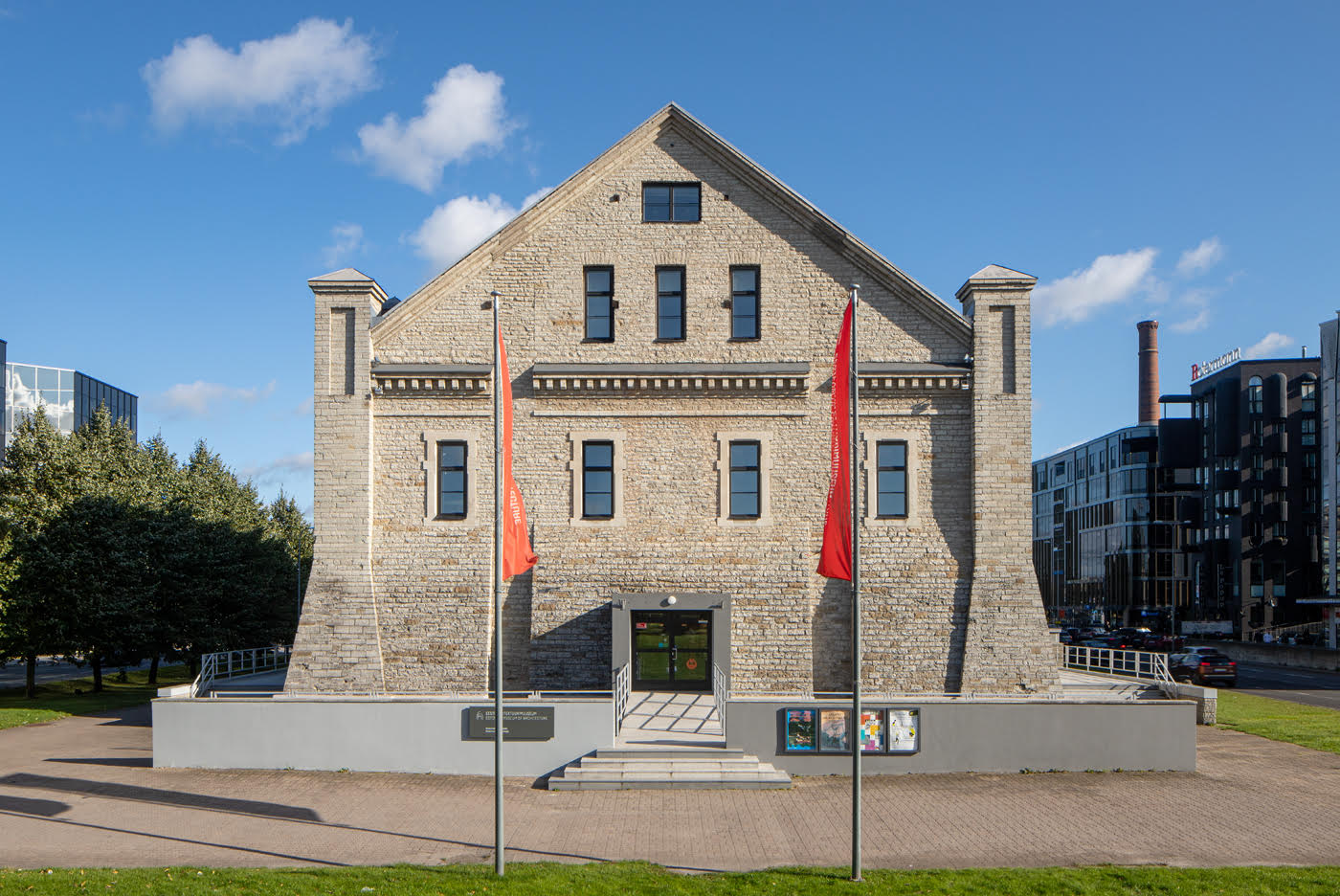-
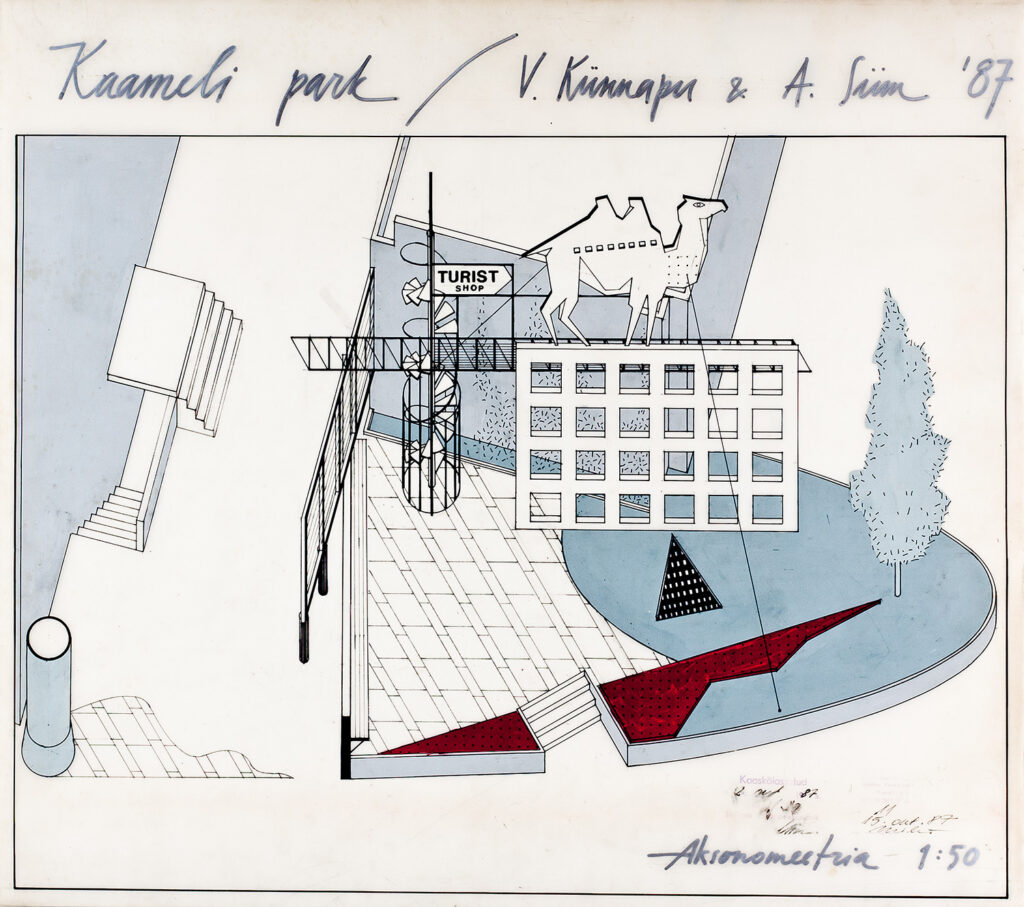
-
Camel Park, axonometry
-

-
Camel Park, ground plan and front view
Vilen Künnapu, Andres Siim, 1987. EAM 41.1.17
Camel Park
At the beginning of Tartu Road in Tallinn, architects Vilen Künnapu and Andres Siim designed a modern urban park that combines a constructivist play of colour and form with architecture and advertising.
The urban park was designed above pavement level. The centrepiece of the design is a spiral staircase that shelters the outbuilding of the apartment building and provides access to the light bridge and a screen wall displaying an advertisement for the Turist shop. Perched on top of the wall, a giant camel catches the eye, gazing firmly at the shop below. The paved square is flanked by a retaining wall with a long bench on one side. Further away, in the corner of the apartment block, is a billboard.
The modestly landscaped park blends well with the square’s architecture and design. A red flowerbed crosses the area like an arrow, a triangular light fixture is placed on the lawn next to it and a conical oak tree crowns the top of the lawn. A climbing Virginia creeper shades the outbuilding next to the park.
The design was approved by Tallinn’s chief artist, Urmas Mikk, in 1987, but it was never realised.
Text: Anna-Liiza Izbaš
-
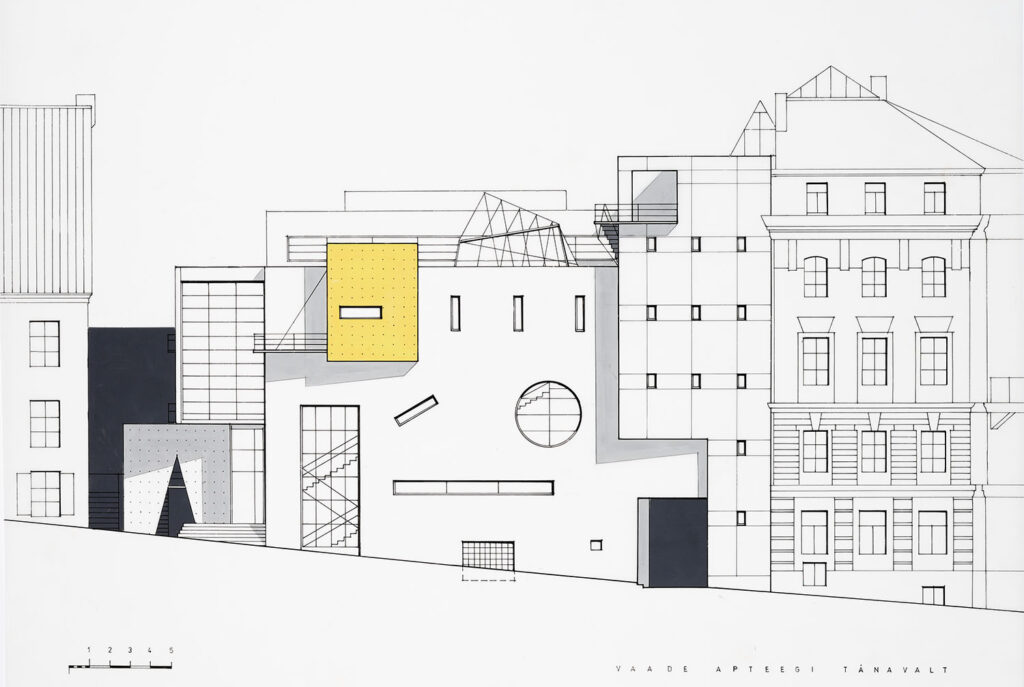
-
The Architects’ House
-
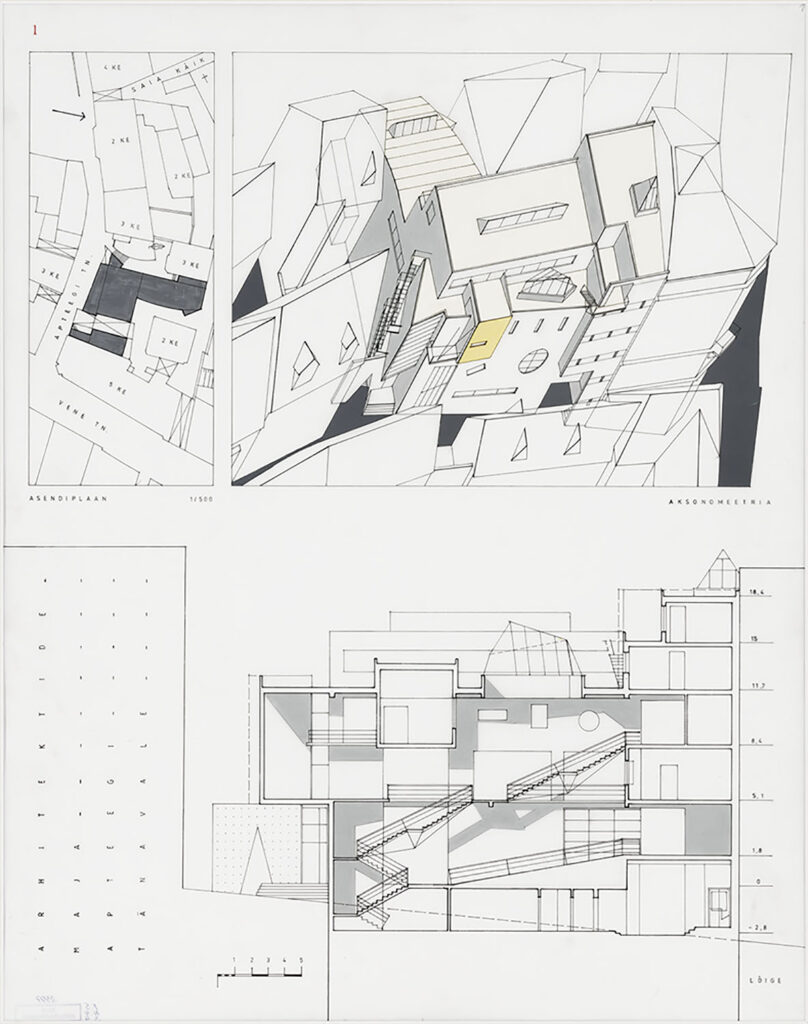
-
Site plan, axonometry and section.
-
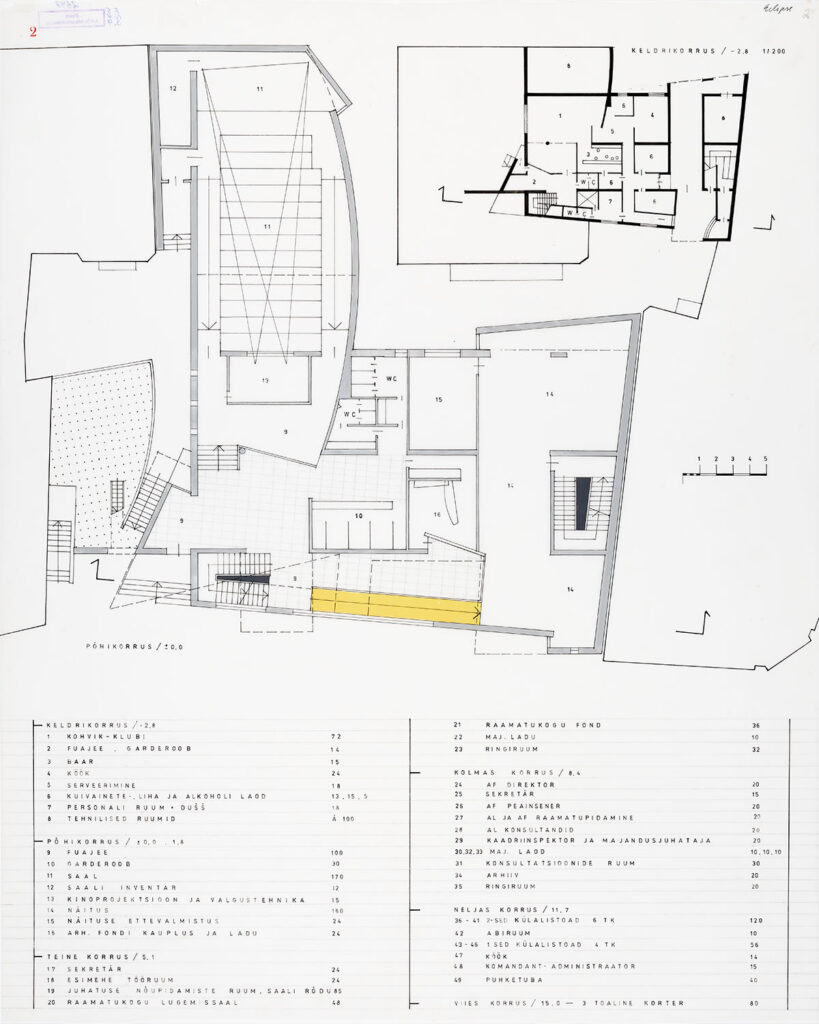
-
1st floor and basement plan.
-
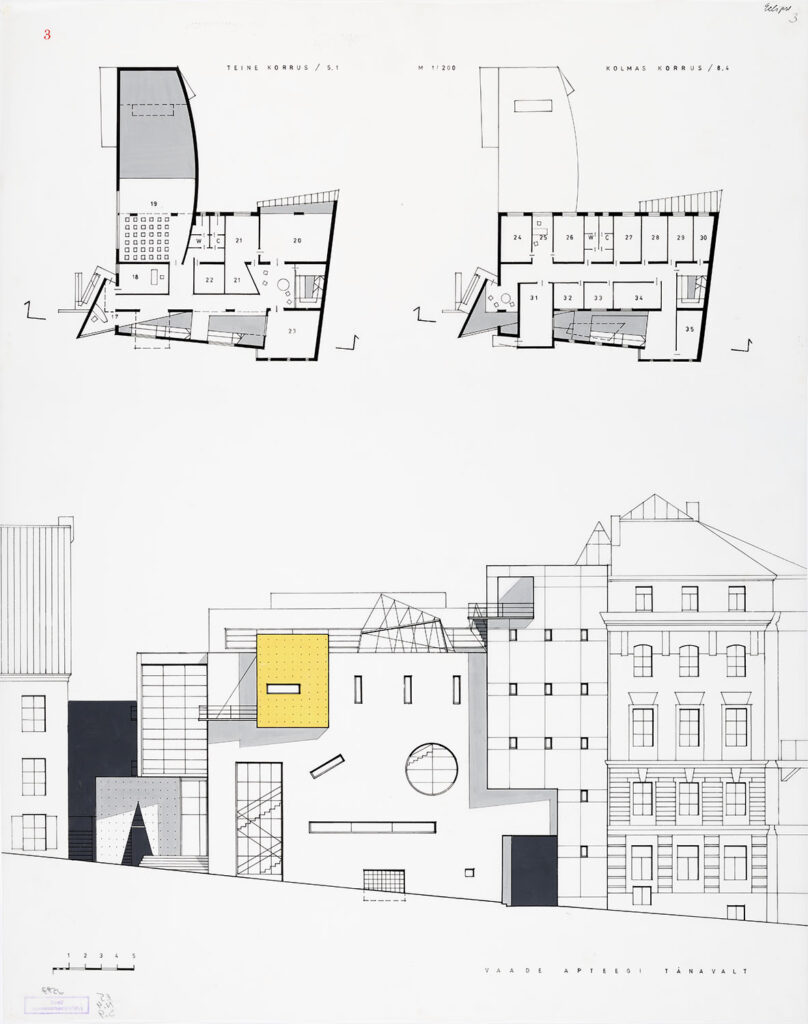
-
View from Apteegi Street, 2nd and 3rd floor plan.
-

-
View from Town Hall Square, 4th and 5th floor plan.
Andres Siim, 1989. EAM 5.4.9
The Architects’ House
The Architects’ House was to become the centre of Estonian architectural life, replacing the buildings destroyed during the war on the Apteegi Street in Tallinn’s old town. Among the 11 entries in the architectural competition, which ended in the spring of 1989, the design “Eclipse” by architect Andres Siim stood out. His work corresponded to the vision of the architects’ house and was awarded the first prize in the competition. The building had to be based on the structure of historically developed properties in the old town; the new building had to represent contemporary architecture in a dignified manner, while the volume of the building, the articulation of the facade and the roofscape had to match the milieu of the old town. The jury highlighted the conformity of the external and internal spatial solution, the multi-layered and interesting floorplan of the Architects’ House designed by Andres Siim. The narrow plots, characteristic of the old town, were clearly reflected in the facade design of the building, the special-shaped windows and the yellow section of the building added character. In addition to work and meeting rooms, a hall and library, cinema projection, archive and exhibition rooms and a cafe-club room were planned for the Architects’ House. Although the design of the building received positive feedback, the future progress of the project was difficult. The dream of an architects’ own house faded behind the bureaucracy of the authorities, construction and financial issues. A noteworthy project was not built. Text: Anna-Liiza Izbaš
(klick on the picture to see more illustrations)











